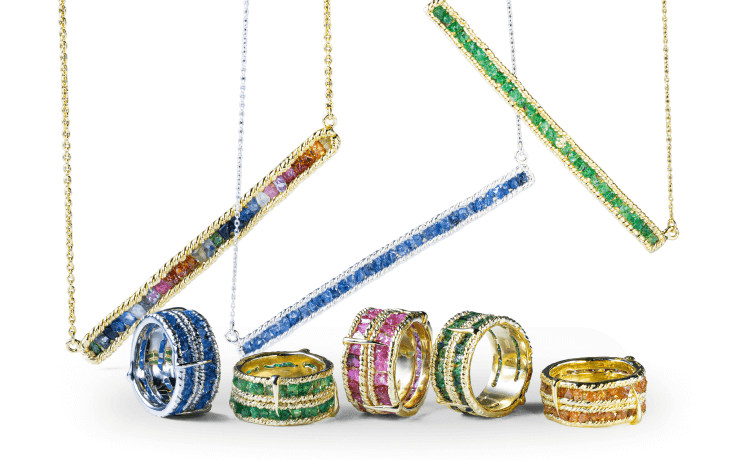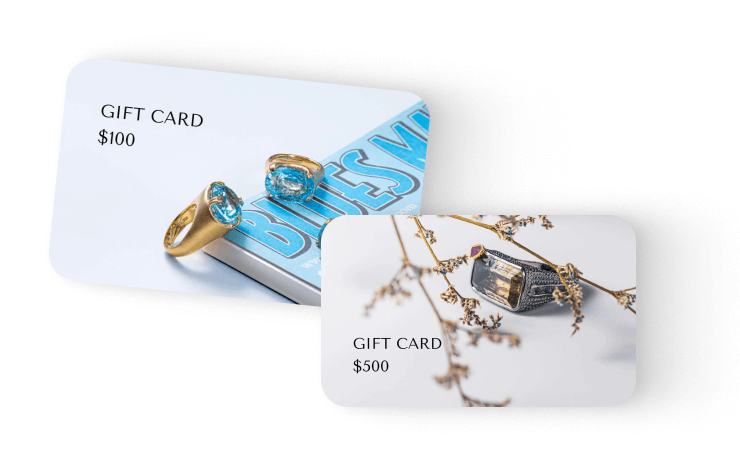German Kabirski and His Jewelled Freaks
Embrace the Grotesques
Historically, grotesques have played an important part in architecture. These mythical beasts have been carved into stone for millennia, manifesting a power of protection to ward off evil spirits and protect those inside. While German Kabirski’s work is not so much literal as it is expressive in this sense, for me, it harkens back to these sometimes often peculiar and creepy figures. Dark, steely, oxidized silver combined with brilliant-coloured gemstones and intricate latticework adorn German’s creations resulting in a masterful balance of dark and light, a true embodiment of the art of the grotesque.
 Photo c/o: German Kabirski
Photo c/o: German Kabirski
Who are you?
When I was born, my parents named me German. Ever since then, two questions have occupied my thoughts: why German and who am I exactly? There is still no answer. The obvious one would be that I am a jeweler or a designer, but I am neither. Maybe I am just an artist, but it is also plausible that I am simply an anarchist, living by my own rules and doing things that I enjoy.
What do you make/sell?
The pieces I design are difficult to label as jewelry, so I simply call them freaks. Freaks can be accessories, but alternatively, they can also be seen as amulets that safeguard the wearer and help express their individuality.
In nature, there is no line between beautiful and ugly, it’s an exclusively human trend. I guess you can say that freaks are beauty in anticipation.
Where do you make/sell it?
I’ve been living and working in Bangkok for quite some time now. It’s a place where I feel at ease and truly appreciate the tranquil Buddhist way of life embraced by the Thai people. I have my own studio, and we’re preparing to launch a factory in the near future. When it comes to marketing my products, the majority of our sales occur through our online store, primarily targeting customers in the United States.
 Photo c/o: German Kabirski
Photo c/o: German Kabirski
When/why did you start?
I started working in the jewelry business a long time ago. At first, like many others, I attempted to create conventional jewelry. However, I quickly discovered that it wasn’t my true passion. So I began breaking the established norms of jewelry design and production and doing things contrary to expectations. This act of rebellion continues to inspire and motivate me.
 Photo c/o: German Kabirski
Photo c/o: German Kabirski
Where do you get your best ideas?
To be completely honest, I don’t seek inspiration from any particular source. Being a dedicated workaholic with a choleric disposition, I find myself working almost every night, channeling my daily reflections into my craft. It’s more like labor psychotherapy, and many of my creations embody completely different moods and emotions.
 Photo c/o: German Kabirski
Photo c/o: German Kabirski
Do you ever feel bored? What do you do about it?
I only remember feeling bored during my early years when I was put to bed but couldn’t fall asleep. I came up with a game of sprinkling sugar on my head and then picking it out, amusing myself and challenging my own records for finding the sugar particles. Since then, I rarely feel bored.
What’s the next big jewelry trend?
It’s hard to say, but in my view, with AI and 4D printers rendering the work of human jewellers obsolete, there will be a growing trend towards jewelry with hidden meanings and handmade imperfection. Contemporary art jewelry will gain popularity, and accessories will become more personalized, serving as a means of self-expression. People will gravitate towards raw natural unprocessed gemstones and other unconventional materials. The qualities that are currently admired in jewelry, such as flawless perfection and meticulous craftsmanship, will be effortlessly replicated by machines at a fraction of the cost, ultimately losing their allure.
What’s our industry’s biggest challenge?
The jewelry industry has long faced a challenge; it is far too inert and significantly lags behind the rest of the fashion industry. I think the major players will find it increasingly difficult to compete with AI. The future belongs to individual artists or small creative teams that bring forth something fresh and unconventional.
 Photo c/o: German Kabirski
Photo c/o: German Kabirski
How do we fix it?
It’s both simple and challenging. The jewelry industry needs to focus on individual creativity and artistry. The value of a piece should not rely on precious metals and gemstones but rather be derived from its artistic and aesthetic significance.
Where do you want to see yourself creatively in five years?
I find it hard to predict and plan. But it doesn’t really matter. The most important thing is to not fall in love with your own creations and to always feel a hunger for exploration.
 Photo c/o: German Kabirski
Photo c/o: German Kabirski
If you could ask an industry peer one question, what would you ask and to whom would you ask it?
I’ve got a question, but instead of asking a fellow jewelry designer, I’d love to direct it to a true artist like Banksy. I would be curious to know, if he were to start creating jewelry, what kind of idea he would bring to life first. As an artist known for his thought-provoking works, I can only imagine the incredible creativity and unconventional approach he would bring to the realm of jewelry design.






Share your comment
This site is protected by hCaptcha and the hCaptcha Privacy Policy and Terms of Service apply.